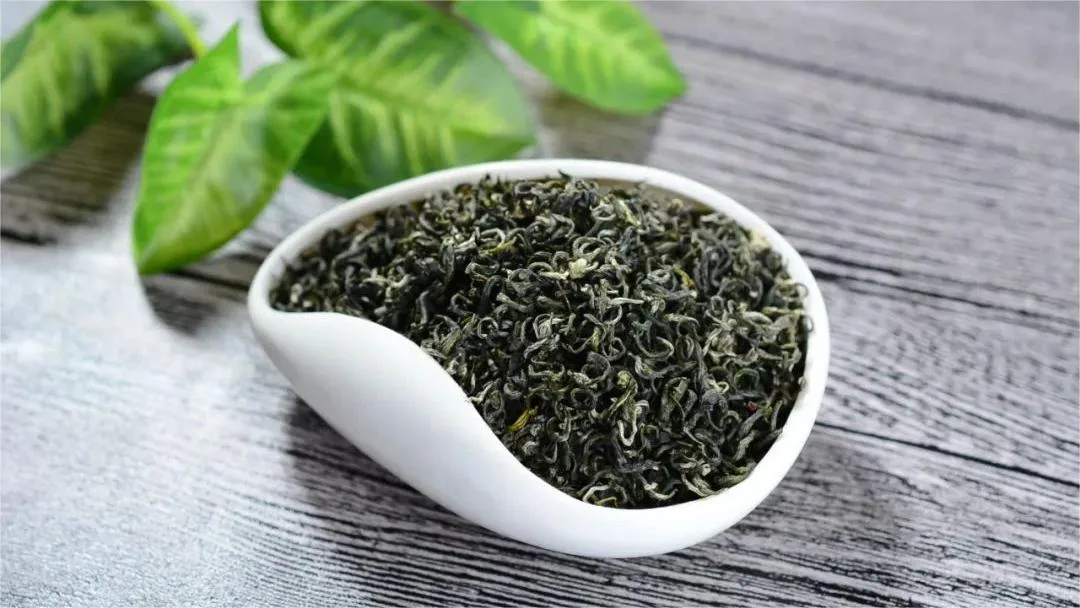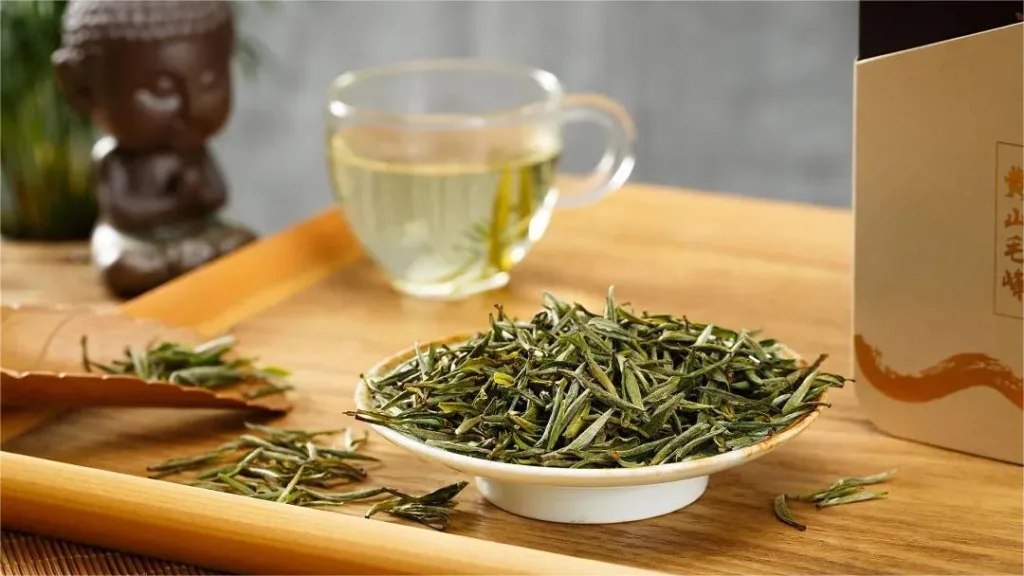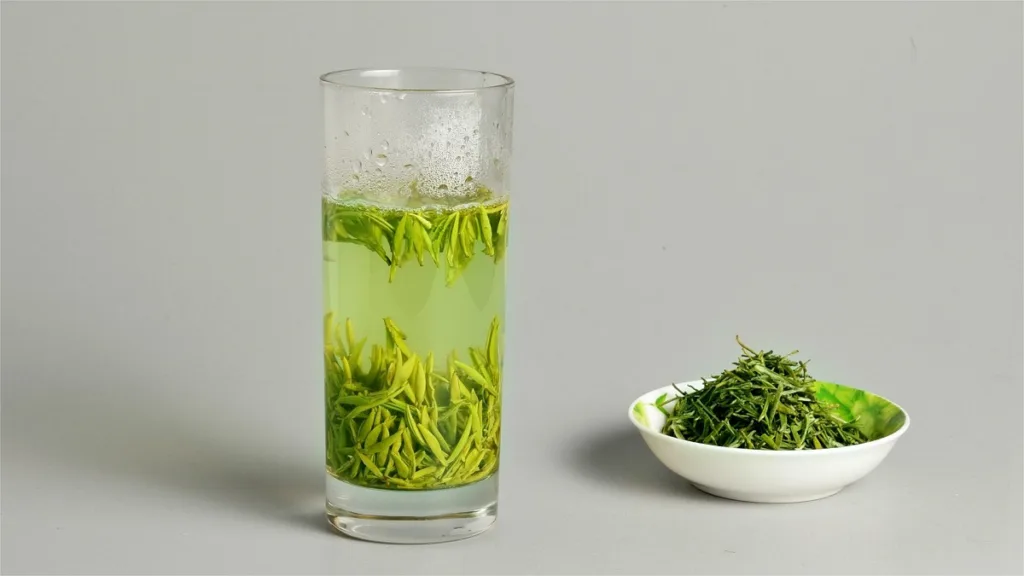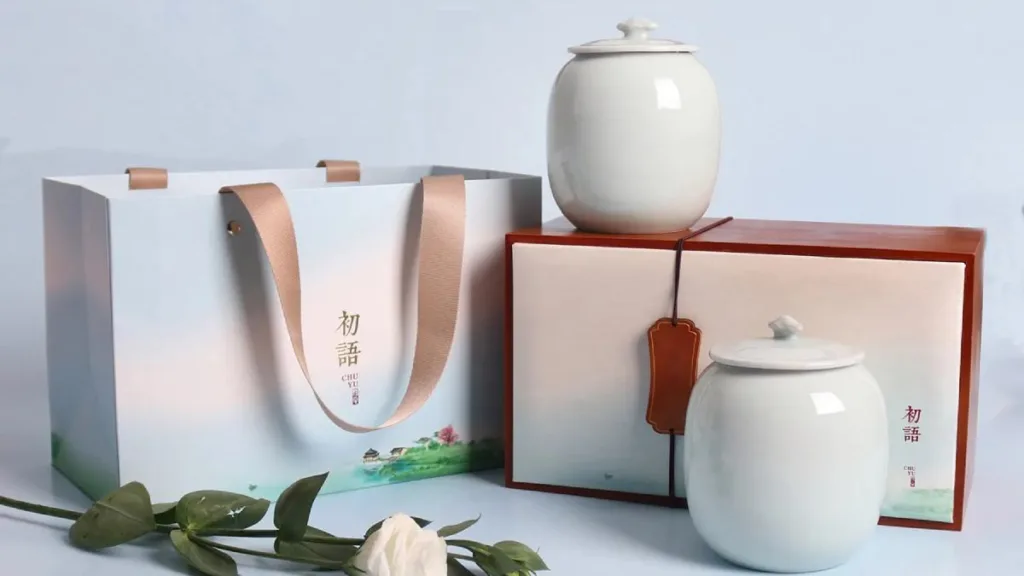Chinese green tea is renowned for its diversity and exquisite flavors. Here, we introduce some of the most popular varieties of Chinese green tea.
West Lake Dragon Well (Xi Hu Long Jing): West Lake Dragon Well tea, produced in the scenic West Lake area of Hangzhou, Zhejiang Province, is one of China’s most famous green teas. It is known for its “Four Uniques”: vibrant green color, rich aroma, sweet taste, and beautiful flat and smooth appearance. The highest-grade Dragon Well tea boasts straight and smooth leaves, a fresh green color, a delicate and high aroma, and a refreshing, sweet, and mellow taste. It is best enjoyed as a “pre-Qing Ming” tea, which refers to tea harvested before the Qing Ming Festival in early April. When steeping Dragon Well tea, it is recommended to use a glass teacup to appreciate the visual and gustatory delights.
Bi Luo Chun: Bi Luo Chun, especially the variety from Dongting Mountain in Jiangsu Province, is known for its curled, spiral shape. It emphasizes “one bud, three leaves” and is recognized for its tender leaves, bright color, rich fragrance, and fresh, mellow taste. When brewing Bi Luo Chun, the coiled shape of the tea leaves can be admired by using the “upward pour” method. First, preheat the glass teacup, pour in water at around 85°C, and then add the Bi Luo Chun, allowing the tea leaves to gracefully unfurl in the water.
Enshi Jade Dew (En Shi Yu Lu): This poetic-sounding tea, formerly known as “Jade Green,” is a steamed green tea that features slender, straight, needle-like leaves with a vibrant green color and a white downy appearance. After steeping, the leaves expand beautifully, creating a tender, bright green liquor. This tea is celebrated for its fresh and crisp flavor. As one of the few steamed green teas in China, it is made from one bud with one or two leaves.
Liu An Melon Seed (Liu An Gua Pian): Hailing from Liu An City in Anhui Province, Liu An Melon Seed tea is unique in that it is made solely from single leaves without any buds or stems. This results in a distinct flavor profile, free from grassy notes. The leaves are processed to retain their individual shape, and the removal of stems ensures a rich and non-bitter taste with a pleasant aroma. This tea is typically harvested within ten days before or after the Grain Rain (Gu Yu) period, with a preference for older leaves. Brewing Liu An Melon Seed tea is best done using the “mid-pour” method with water around 90°C.
Tai Ping Hou Kui: Grown in the Xinming Township of Taiping County in Anhui Province, Tai Ping Hou Kui is known for its large and flat leaves, resembling two leaves embracing a bud. It is primarily grown in mountainous areas above 350 meters, with its most renowned production area being Monkey Keng (猴坑). This tea stands out for its unique appearance, harvest time extending into late spring (until Li Xia), and remarkable ability to withstand multiple infusions. When brewing Tai Ping Hou Kui, a special glass teacup, narrow at the base and wider at the top, is often used. The leaves are added with one-third of hot water at around 90°C, allowing them to expand gracefully.
Xin Yang Mao Jian: Xin Yang Mao Jian is mainly produced in the “Four Clouds” (Che Yun Shan, Ji Yun Shan, Yun Wu Shan, and Tian Yun Shan) and “Two Ponds” (Hei Long Tan and Bai Long Tan) areas of Xinyang County in Henan Province. It is characterized by its tender, slender, and pointed leaves with abundant white down. Xin Yang Mao Jian has a fresh, crisp tea liquor with a distinct aftertaste. When brewing, it is advisable to use water around 85°C.
Lu Shan Yun Wu: Lu Shan Yun Wu tea is a traditional green tea that grows on Lu Shan, Jiangxi Province. It has been renowned as a tribute tea since the Song Dynasty. The tea is described using the “Six Uniques”: thick and strong leaves, abundant green color and white down, bright and clear tea liquor, uniform and tender leaves, a lasting, fresh aroma, and a rich, sweet taste. This tea’s unique flavor results from the cool and foggy climate and short direct sunlight exposure on Lu Shan. It is known for its thick leaves, rich white down, sweet taste, and resilience to multiple steepings.
Meng Ding Gan Lu (Meng Ding Sweet Dew): Meng Ding Gan Lu is one of China’s oldest and most famous teas, known for its distinctive curled leaves. Produced in the Meng Ding Mountain area of Sichuan Province, this tea is typically harvested in the early spring, with only one bud and one leaf or a bud with two leaves being used. The finished tea features slender, downy leaves, a clear and bright yellow-green liquor, and a refreshing, sweet taste reminiscent of morning dew. The tea originates from the waters of the Yangtze River and the peaks of Meng Ding Mountain.
In China, the culture of tea is deeply rooted in history and tradition. Each of these green teas offers a unique experience, from the visual allure of the leaves to the captivating aromas and flavors they impart. Whether you prefer the delicate elegance of West Lake Dragon Well or the robust character of Tai Ping Hou Kui, exploring the world of Chinese green teas is a journey filled with delightful nuances and sensory pleasures.




